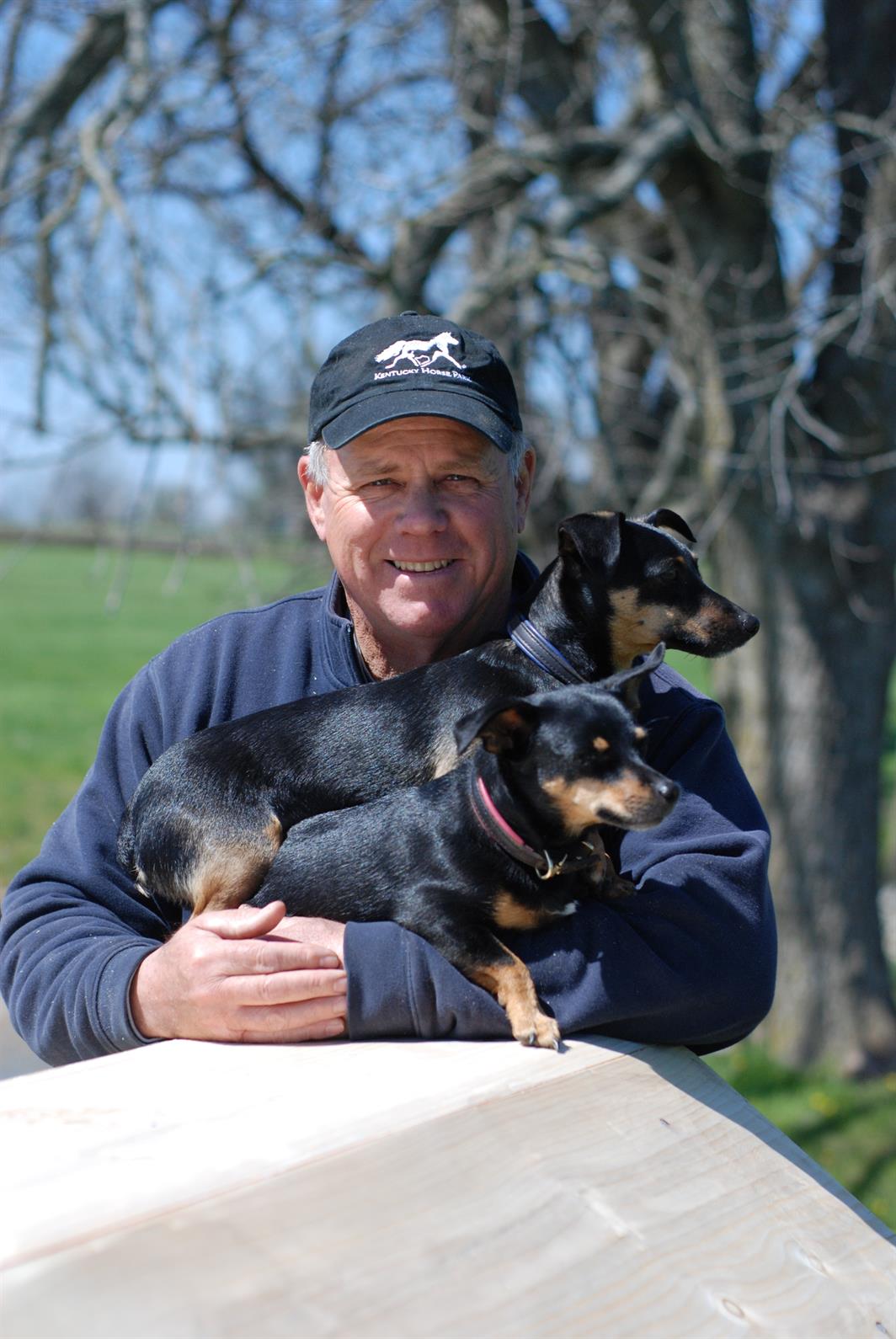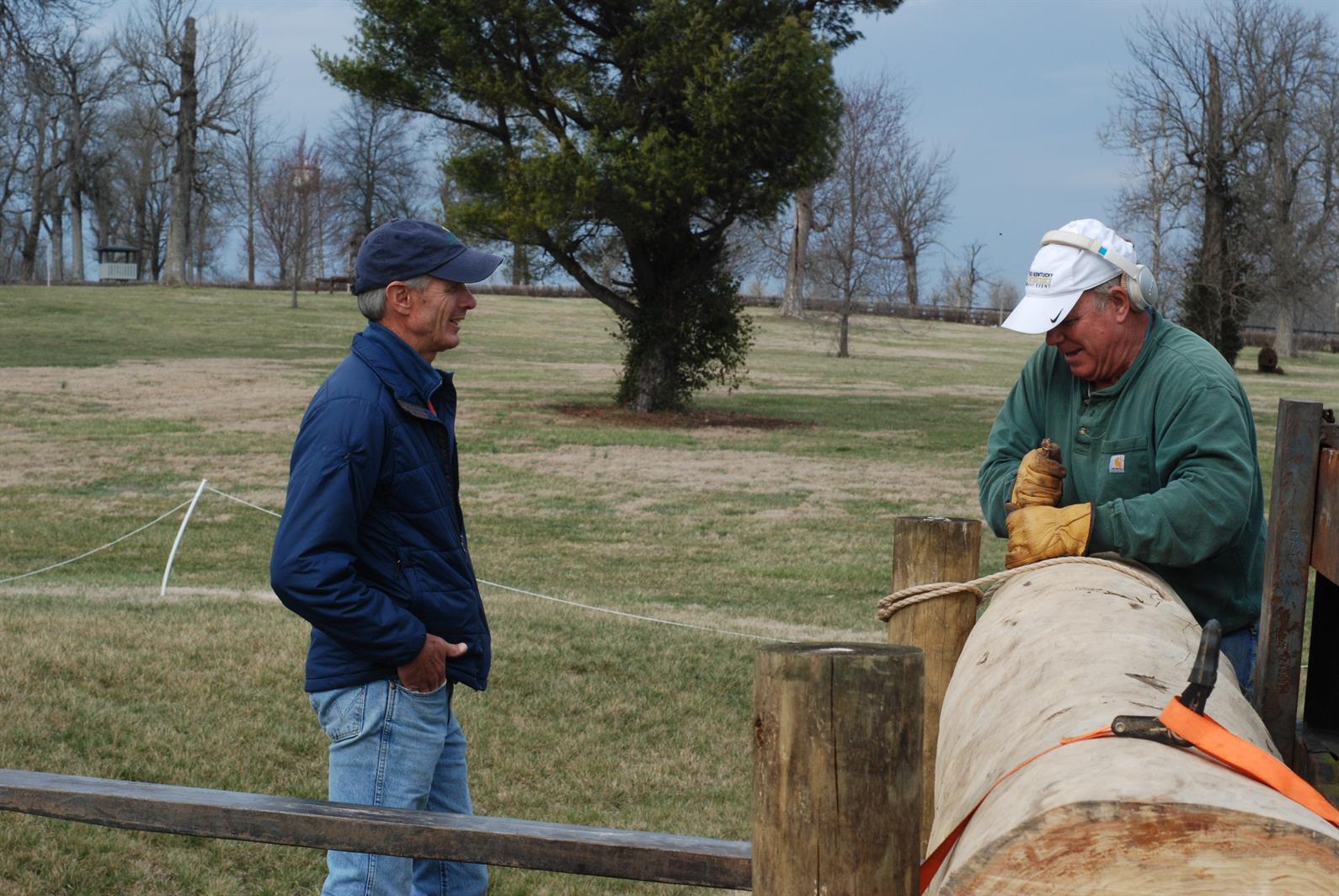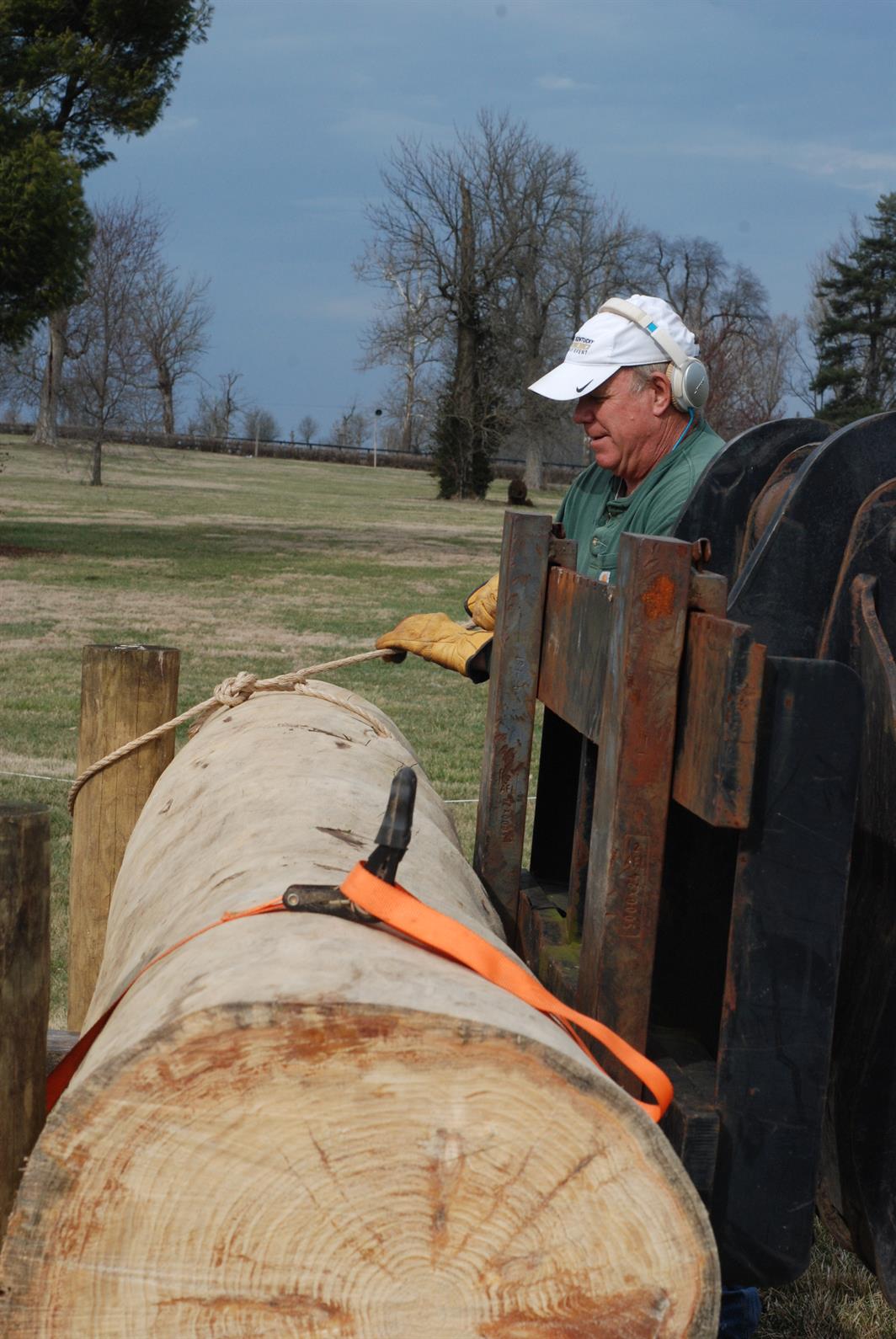
Photo: Kim Russell/US Equestrian
Anyone who has attended the Land Rover Kentucky Three-Day Event presented by Mars Equestrian knows that its beautiful cross-country course flows along the bluegrass of the Kentucky Horse Park every year. Mick Costello, the LRK3DE cross-country course builder, puts in countless hours constructing the cross-country fences that make up the renowned course for the only five-star event in the Western Hemisphere. He has become a mainstay for the LRK3DE as the 2019 event marks his 21st year building the course.
Creating the LRK3DE Cross-Country Course
The finished product of the LRK3DE cross-country course takes about nine months to piece together. In July, Derek di Grazia, the LRK3DE cross-country course designer, spends time walking around the terrain of the Kentucky Horse Park and develops a course for the following year’s event.
“The planning process is Derek’s. He walks around and comes up with a track first. After about a day or so of doing that, he comes up with a plan and tries to figure out where he wants to put the jumps. He usually has an idea of where he wants things pretty fast. And he will say, ‘Can we put this here and that there?’” Costello said.
Once Costello is given the plan for the course, he begins the gradual process of constructing the course, whether that is building new elements or refurbishing fences from previous years. While the plan can change slightly, the course is firm in di Grazia’s mind by December. In early March, the cross-country course designer and builder spend two days setting fences, determining the exact locations of the majority of the fences, and establishing the correct heights. A month later, the technical delegate reviews the course with di Grazia and approves all the heights. Two weeks out from the event, the fences are stained and finished with brush, and mulch is put down for the floral decorations which are placed the Saturday prior to the event.
Costello uses a wide variety of tools and machinery while on the job. He uses chainsaws, hand tools, power tools, a bandsaw mill, a backhoe, and a multi-terrain loader (or skidsteer), just to name a few. Over the years, Costello has developed the perfect assortment of supplies for the job.

Photo: Kim Russell/US Equestrian
“The rubber tracks [of the multi-terrain loader] help a lot with building new terrain, because they bind the dirt and shape it. When I got the backhoe, I got eight-foot forks, because [five-star] jumps are a little huge to carry around. A few years ago, I got a bandsaw mill. That has helped, because I like to make the lumber for the jumps very thick.” A bandsaw mill holds and cuts large pieces of timber, allowing Costello to easily cut thick sections to be used to build sturdy cross-country fences.
He works with several types of wood to build the jumps, even some that have been sourced from within the Kentucky Horse Park. Costello also gets wood from other sources, such as long-lasting elm from TreePro Inc., cedar from Kentucky Master Logger Jerry Wright, and loblolly pine from Kentucky Master Logger Arlie Birchfield.
Costello has been mostly a one-man show building the LRK3DE cross-country course, but he does have help. Occasionally, Dave Leonard helps Costello, while closer to the event Levi Ryckewaert and Tyson Rementer assist. On cross-country day, several people are spread out around the Kentucky Horse Park.
“Levi and Tyson come in and help me finish all the brush and stain. They are terrific,” Costello said. “We have a slew of people here that Saturday, because we have five or six regional crews out on course, and then Dave and I cruise the whole course, Dave with footing and me with everything so if something happens I’m there. There are so many spectators, so it is hard to get around, so we have people at different sectors.”

Photo: Kim Russell/US Equestrian
In addition to building the cross-country course, taking care of the footing is an important part of Costello’s job. The ground of the cross-country track needs to be maintained throughout the year, using a combination of seeding and aerating. “The AGRI-Vator goes in six inches and actually shatters the ground. I tried to do a little verti-draining, which is a deep tine aeration that basically does the same thing as the AGRI-Vator but goes deeper, so it gives more room for the roots to allow better root structure and drainage.” Also, Mirimichi Green products are used to enhance the footing, giving it the extra boost to complete the world-class experience for horse and rider.
Though the majority of the work for the LRK3DE cross-country course takes place over several months, Costello remains busy the week of the event. The cross-country fences need to be flagged by Tuesday for the Ground Jury’s course walk. On Friday, the sand for the road crossings is put down so foot and vehicle traffic are not going across the turf all week. By the time Saturday comes around, Costello and his crew “do what they are told.”
Once the cross-country phase is over, the course is quickly unassembled. The flowers are removed Saturday evening, with the mulch around the jumps, flags, galloping lanes, and portable fences being removed within a week. “We AGRI-Vate and seed, if necessary,” Costello said. “I bought a harley rake, which is a cool machine for my skidsteer that I can smooth any ruts with; then we get ready for the [Kentucky Horse Park Foundation’s] schooling days over the [Kentucky] Derby weekend.”
Costello brings immense knowledge and experience to his role as the LRK3DE cross-country course builder. He takes great pride in his work and gets significant joy out of it. In addition to admiring the determination of the horses and riders on cross-country day, spectators can observe the fine craftsmanship of the fences—the culmination of work that has taken place over several months but honed over the majority of Costello’s lifetime.
To learn more about the planning and building of the cross-country course, visit US Equestrian’s online Learning Center and watch the video “Land Rover Kentucky Three-Day Event Cross-Country Course,” hosted by Costello.
This article is original content produced by US Equestrian and may only be shared via social media. It is not to be repurposed or used on any other website aside from USequestrian.org.


